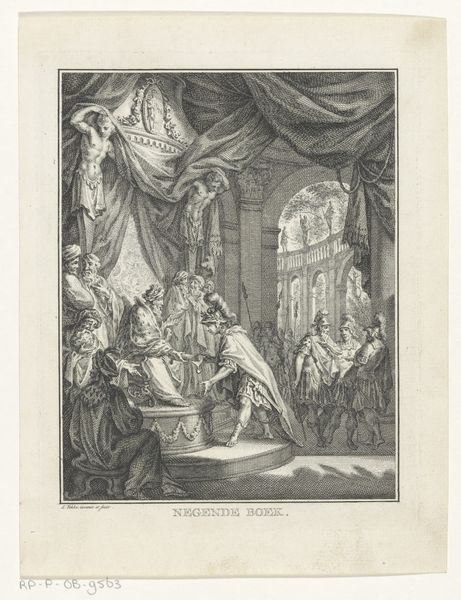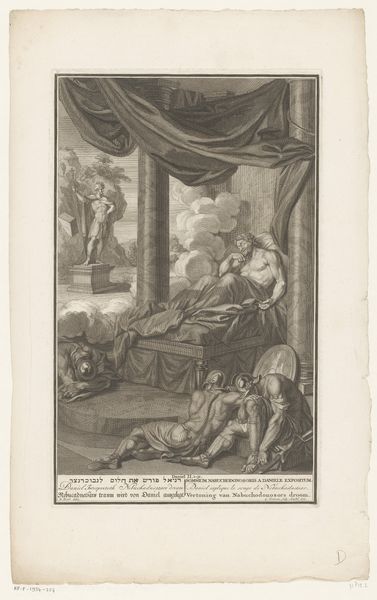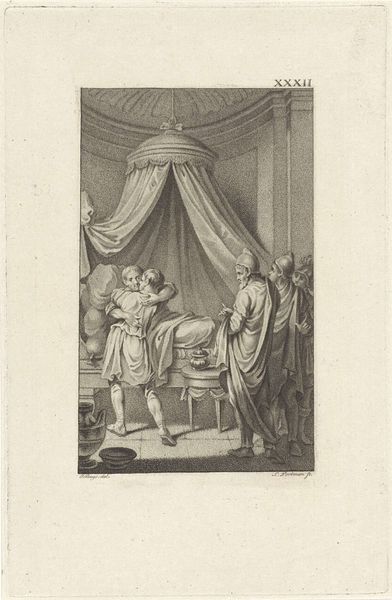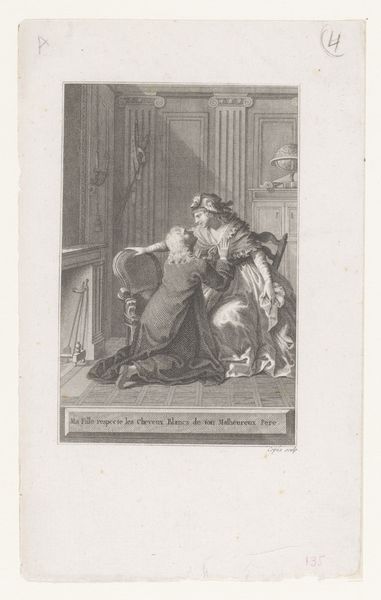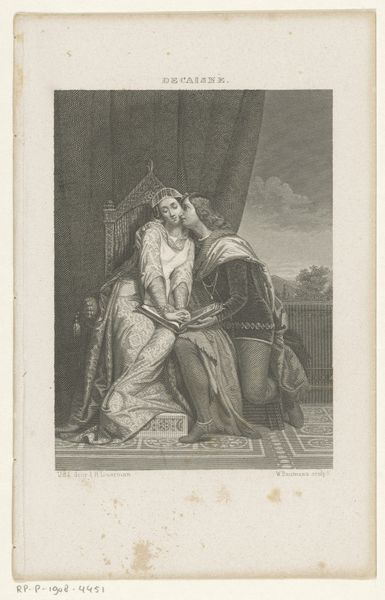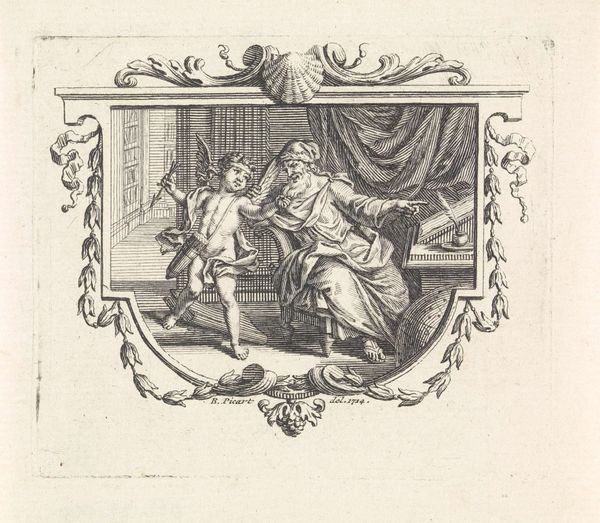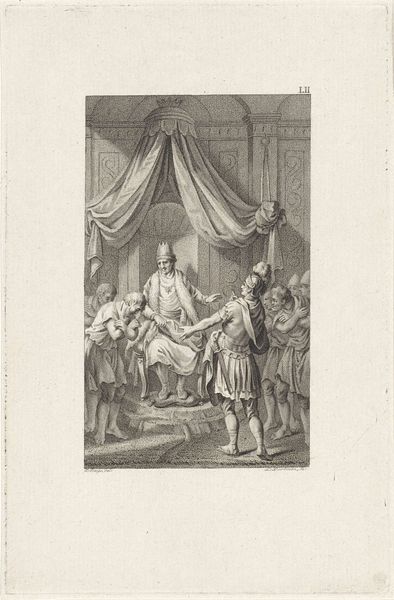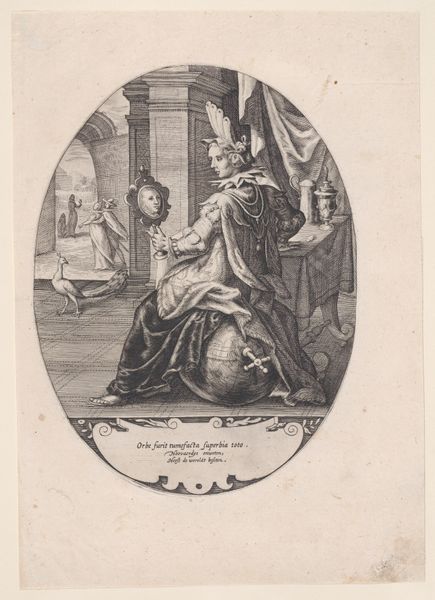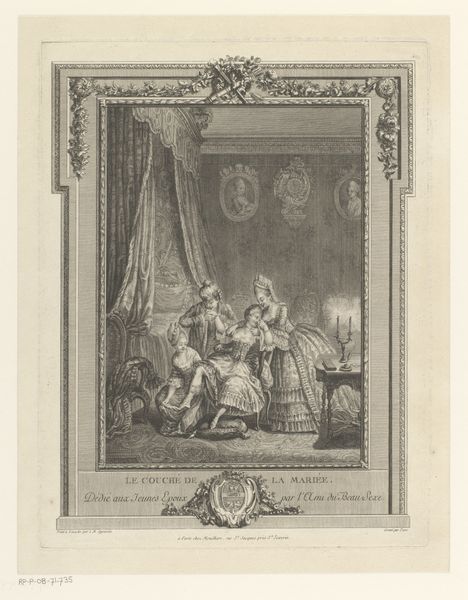
print, engraving
#
portrait
# print
#
old engraving style
#
etching
#
history-painting
#
academic-art
#
engraving
#
realism
Dimensions: height 265 mm, width 195 mm, height 274 mm, width 200 mm
Copyright: Rijks Museum: Open Domain
Curator: Here we have a print dating from the period of 1826 to 1852. The piece is titled “Portret van Karel X van Frankrijk”, or “Portrait of Charles X of France” in English, and is believed to be by the hand of Pierre Michel Adam. It’s an engraving. What’s your first impression, Editor? Editor: Bleak. So much icy grandeur. You can almost smell the mothballs and hear the hushed whispers. Curator: Indeed. Prints like these, particularly engravings, played a critical role in shaping public perceptions of political figures. Note the architectural backdrop; it's a constructed vision of power as much as it is a depiction of a real place. The artist really leans into the aesthetics of power. Editor: He seems weighed down by the ermine and expectation, doesn't he? A bit theatrical even, like he's posing for posterity rather than living it. What I see is a tension—grandeur versus the weight of responsibility. Curator: The details matter, don’t they? The robes, the crown on the cushion, the staff, all speak to the iconography of kingship that Charles X was trying so diligently to restore, to reinforce the Bourbon monarchy’s legitimacy after the revolution. But his policies and perceived autocratic leanings faced challenges. These items tell us as much. Editor: And the pose. Classic portraiture, of course, but the way he holds that hat...almost defensively. There's a hint of vulnerability beneath the regalia. What did this say to audiences back then? How were prints viewed during the French Revolution? Curator: Such portraits circulated widely. Consider this piece in relation to revolutionary sentiment. Despite Charles's efforts at legitimacy, such displays of royal pomp could very well backfire by stoking republican sympathies and reminding citizens what they were fighting against. Art shaped political reality, and these images had considerable agency. Editor: It’s funny, isn’t it? Intended to reinforce power, it also reveals fragility. I suppose art always holds more than one truth. Curator: That is the core of it, Editor. This image tells us so much about the politics, culture and role of public perception, even if it’s just with etched lines. Editor: Well said. It just proves that even seemingly simple portraits can be unexpectedly revealing if we’re willing to look beneath the surface of it all.
Comments
No comments
Be the first to comment and join the conversation on the ultimate creative platform.
